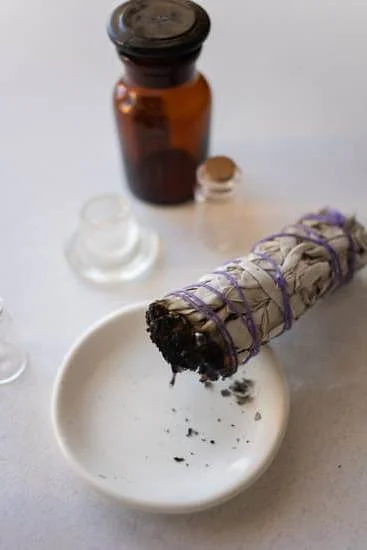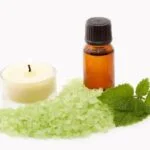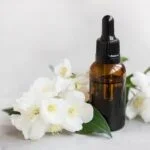Looking to enhance your overall well-being? Learn how to use essential oil aromatherapy to promote relaxation and improve your physical and mental health. Essential oil aromatherapy has been used for centuries in various cultures around the world for its therapeutic benefits.
From stress relief to respiratory health and skincare, essential oils offer a natural approach to wellness. In this article, we’ll explore the basics of essential oil aromatherapy, including its benefits, methods of use, safety precautions, and how to create your own custom blends.
Essential oil aromatherapy involves the use of aromatic plant extracts to promote holistic healing and wellness. These highly concentrated oils are derived from different parts of plants such as flowers, leaves, fruits, and roots through processes like distillation or cold pressing. The inhalation of these essential oils can have a powerful impact on our emotions and physiological responses. From calming anxiety to relieving headaches, essential oils can be a valuable tool in maintaining overall well-being.
Throughout history, essential oils have been used for their medicinal and aromatic properties. Ancient civilizations such as Egypt, China, and India utilized these natural essences for religious ceremonies, cosmetic purposes, and medicinal treatments.
Today, essential oil aromatherapy continues to gain popularity as people seek out natural remedies for common ailments and sources of relaxation in a stressful world. Whether you’re new to essential oils or looking to expand your knowledge on their uses, this guide will provide you with comprehensive information on incorporating the benefits of essential oil aromatherapy into your daily life.
Choosing the Right Essential Oils for Aromatherapy
When it comes to choosing the right essential oils for aromatherapy, it’s important to understand the different types of essential oils available and how they can be beneficial for your specific needs. Essential oil aromatherapy involves using natural plant extracts to promote physical, mental, and emotional well-being. Whether you’re looking for relaxation, stress relief, or even relief from common ailments, choosing the right essential oils is key to experiencing the full benefits of aromatherapy.
Understanding Different Types of Essential Oils
There are a wide variety of essential oils available, each with its own unique properties and potential benefits. Some popular essential oils include lavender for relaxation and sleep support, peppermint for headaches and mental focus, and eucalyptus for respiratory health. It’s important to research different types of essential oils and their uses to determine which ones may be most effective for your needs.
How to Select the Best Essential Oils for Your Needs
When selecting essential oils for aromatherapy, consider what specific benefits you are looking to achieve. Are you seeking stress relief, improved sleep quality, or natural pain relief? Once you’ve identified your goals, research which essential oils are known for providing those benefits. Additionally, consider personal preferences such as scent and application method when choosing essential oils.
Popular Essential Oils for Common Ailments and Relaxation
For common ailments such as headaches or muscle aches, essential oils like lavender, peppermint, and chamomile can be effective natural remedies. If relaxation is your primary goal, soothing scents like lavender, bergamot, and ylang-ylang are popular choices. Understanding the specific properties of popular essential oils can help you select the best options for incorporating into your aromatherapy routine. When using diffusers or applying topically on skin ensure proper guidelines are followed including safe dosage amounts.
Hopefully by following these tips on choosing the right essential oils based on individual needs when utilizing
Methods of Using Essential Oils for Aromatherapy
When it comes to using essential oils for aromatherapy, there are several methods that can be employed to experience the therapeutic benefits of these natural extracts. One popular method is diffusing essential oils, which involves dispersing the oil particles into the air so that they can be inhaled.
This can be done using a diffuser, which comes in various forms such as ultrasonic, heat, evaporative, and nebulizing diffusers. Each type of diffuser has its own pros and cons, but the end goal is to effectively disperse the essential oil aroma throughout a room.
Another common way to use essential oils for aromatherapy is through topical application. This involves diluting the essential oil with a carrier oil and applying it directly to the skin. When using essential oils topically, it is important to perform a patch test first to check for any skin sensitivity or allergic reactions. It’s also crucial to adhere to proper dilution guidelines to ensure safe use of the essential oil.
Inhalation techniques are also widely used for aromatherapy purposes. Inhaling the aroma of essential oils can have a direct impact on the limbic system in the brain which controls emotions and memory, providing various mental and emotional benefits. Methods of inhalation include using an inhaler or simply placing a few drops of an essential oil on a tissue or cloth and inhaling deeply. This method is often utilized for quick relief from stress, anxiety, or headaches.
| Essential Oil Aromatherapy Method | Description |
|---|---|
| Diffusing | Dispersing oil particles into the air for inhalation |
| Topical Application | Diluting and applying essential oils onto the skin |
| Inhalation Techniques | Inhaling the aroma of essential oils using an inhaler or directly from a surface |
Safety Precautions When Using Essential Oils
When using essential oils for aromatherapy, it is important to keep in mind certain safety precautions to ensure a safe and enjoyable experience. Essential oils are highly concentrated and potent, and if not used properly, they can cause adverse reactions. Here are some guidelines to follow when using essential oils for aromatherapy:
- Dilution Guidelines: Essential oils should always be diluted before applying them to the skin. This helps prevent skin irritation or sensitization. The typical dilution ratio is 2-3 drops of essential oil per teaspoon of carrier oil for topical use.
- Potential Side Effects: Some individuals may experience allergic reactions, skin irritation, or respiratory issues when using certain essential oils. It’s important to patch test new oils and discontinue use if any negative reactions occur.
- Use Around Certain Groups: Extra caution should be taken when using essential oils around pregnant women, young children, and pets. Some essential oils can be harmful or toxic to these groups, so it’s best to consult with a healthcare professional before use.
In addition to the above safety precautions, it is crucial to store essential oils properly in dark glass bottles away from direct sunlight and heat. This helps maintain their potency and shelf life. By following these safety guidelines, you can enjoy the benefits of essential oil aromatherapy while minimizing potential risks.
Remember that the quality of the essential oil also plays a significant role in its safety and effectiveness for aromatherapy purposes. Always choose high-quality, pure essential oils from reputable brands or suppliers for the best results in your aromatherapy practice.
Lastly, if you have specific health concerns or medical conditions, it is recommended to consult with a qualified aromatherapist or healthcare provider before incorporating essential oil aromatherapy into your wellness routine. With proper knowledge and mindfulness, you can safely enjoy the therapeutic benefits of using essential oils for aromatherapy.
Creating Your Own Aromatherapy Blends
When it comes to creating your own aromatherapy blends, the possibilities are endless. By blending different essential oils together, you can customize the scent and therapeutic properties to suit your specific needs. Whether you’re looking for a blend to promote relaxation, improve mental clarity, or boost energy levels, understanding the basics of blending essential oils can help you create the perfect combination for your desired effect.
Here are some tips for blending essential oils for specific purposes:
- Start with a clear intention: Before you start blending essential oils, think about what you want to achieve. Whether it’s stress relief, better sleep, or mood enhancement, having a clear goal in mind will guide your selection of essential oils.
- Understand the properties of each oil: Different essential oils have different therapeutic properties. For example, lavender is known for its calming and relaxing effects, while peppermint is invigorating and uplifting. Understanding these properties will help you choose the right oils for your blend.
- Keep track of your recipes: As you experiment with different blends, keep track of the ratios and combinations that work well for you. This way, you can recreate successful blends in the future.
Once you have a good understanding of how to blend essential oils for specific purposes, you can start experimenting with creating your own unique aromatherapy blends. Here are a few popular aromatherapy blend recipes to get you started:
- Sleep Aid Blend: Combine 3 drops of lavender oil, 2 drops of chamomile oil, and 1 drop of ylang-ylang oil. Dilute with a carrier oil such as jojoba or sweet almond oil and apply to pulse points before bedtime.
- Stress Relief Blend: Mix 4 drops of bergamot oil, 2 drops of frankincense oil, and 2 drops of geranium oil. Use in a diffuser to create a calming and uplifting atmosphere.
Incorporating Aromatherapy Into Daily Life
Essential oil aromatherapy can be a wonderful addition to your daily life, providing numerous benefits for your mental and physical well-being. Whether you are looking to reduce stress, improve sleep quality, or enhance your mood, there are various ways to incorporate aromatherapy into your routine. In this section, we will explore some practical tips on how to use essential oil aromatherapy in your daily life.
One of the most common methods of using essential oils for aromatherapy is through diffusion. Diffusers disperse the aromatic molecules of essential oils into the air, allowing you to enjoy their therapeutic benefits throughout your space.
Alternatively, you can apply essential oils topically by diluting them with a carrier oil and massaging them onto your skin. Lastly, inhalation techniques such as using a personal inhaler or adding a few drops of essential oils to a bowl of hot water can be effective ways to experience the effects of aromatherapy.
To begin incorporating essential oil aromatherapy into your daily routine, start by selecting essential oils that align with your specific needs and preferences. For stress relief and relaxation, consider using soothing scents such as lavender, chamomile, or bergamot. If you are looking to enhance mental focus and mood, invigorating scents like peppermint or eucalyptus may be beneficial. Experiment with different essential oils and find what works best for you.
Additionally, it’s important to note that while essential oil aromatherapy can offer numerous benefits, it’s crucial to use them safely. Always follow dilution guidelines for topical application and be mindful of any potential side effects or precautions when using certain essential oils. With these considerations in mind, incorporating aromatherapy into daily life can be a transformative and enjoyable experience.
| Benefits | Recommended Scents |
|---|---|
| Stress Relief | Lavender, Chamomile, Bergamot |
| Mental Focus | Peppermint, Eucalyptus |
Aromatherapy for Physical Health
Using essential oils for physical health is a natural and holistic approach to addressing various ailments and promoting overall well-being. Essential oil aromatherapy can be beneficial for alleviating pain, reducing inflammation, improving respiratory health, and enhancing skin care routines.
Using Essential Oils for Pain Relief and Inflammation
One of the most common uses of essential oil aromatherapy for physical health is for pain relief and reducing inflammation. Essential oils like peppermint, eucalyptus, lavender, and rosemary have analgesic and anti-inflammatory properties that can help ease muscle aches, joint pain, headaches, and menstrual cramps. These essential oils can be blended with carrier oils and applied topically to the affected areas for soothing relief.
Aromatherapy for Respiratory Health and Congestion Relief
Essential oils are also effective in supporting respiratory health and providing relief from congestion due to colds, allergies, or sinus issues. Eucalyptus, tea tree, and peppermint essential oils are known for their decongestant properties and can be used in steam inhalation or in a diffuser to clear nasal passages and promote easier breathing.
Essential Oils for Skin Care and Natural Beauty Treatments
Incorporating essential oil aromatherapy into your skincare routine can offer numerous benefits such as hydration, anti-aging effects, acne treatment, and promoting overall skin health. Essential oils like tea tree, lavender, frankincense, and geranium have antimicrobial, antioxidant, and rejuvenating properties that make them ideal ingredients in natural beauty treatments such as facial serums, body scrubs, or massage oils.
By understanding how to use essential oil aromatherapy for physical health purposes through topical application or inhalation techniques – including creating custom blends tailored to individual needs – individuals can harness the power of nature’s remedies to improve their overall well-being while enjoying delightful fragrances.
Resources and Further Learning
In conclusion, essential oil aromatherapy is a versatile and effective practice that has been used for centuries to promote physical, emotional, and mental well-being. By understanding the different types of essential oils and their benefits, individuals can tailor their aromatherapy experience to suit their specific needs, whether it be for relaxation, physical health, or mental focus.
When choosing essential oils for aromatherapy, it is important to consider safety precautions and potential side effects. Dilution guidelines should be followed to ensure the safe use of essential oils, especially when using them around children or pets. Additionally, pregnant women should exercise caution when using certain essential oils and consult with a healthcare professional before incorporating them into their routine.
For those interested in delving deeper into the world of essential oil aromatherapy, there are numerous resources available for further learning. From recommended books and websites to local classes and workshops, individuals can expand their knowledge and expertise in this holistic practice. By taking the time to educate themselves on how to use essential oil aromatherapy effectively and safely, individuals can reap the full benefits of this ancient healing art.
Frequently Asked Questions
How Do You Use Aromatherapy Essential Oils?
Aromatherapy essential oils can be used in a variety of ways. They can be diffused through the air using a diffuser, added to bath water for a soothing soak, or applied topically when diluted with a carrier oil.
How Do You Use Aromatherapy Body Oils?
Aromatherapy body oils are typically applied directly to the skin after a shower or bath. They can be used for massage, moisturizing, or as a fragrant alternative to traditional lotions or creams.
Where Do You Put Aromatherapy Oils?
Aromatherapy oils can be put in different places depending on how you want to use them. For example, if you’re using them for relaxation or sleep, putting a few drops on your pillow or bedding can be effective.
If you’re looking for an energy boost during the day, applying them to pulse points like wrists and neck can be beneficial. And of course, diffusing them in the air is another popular method of use.

Are you looking for a natural way to improve your health and wellbeing?
If so, aromatherapy may be the answer for you.






